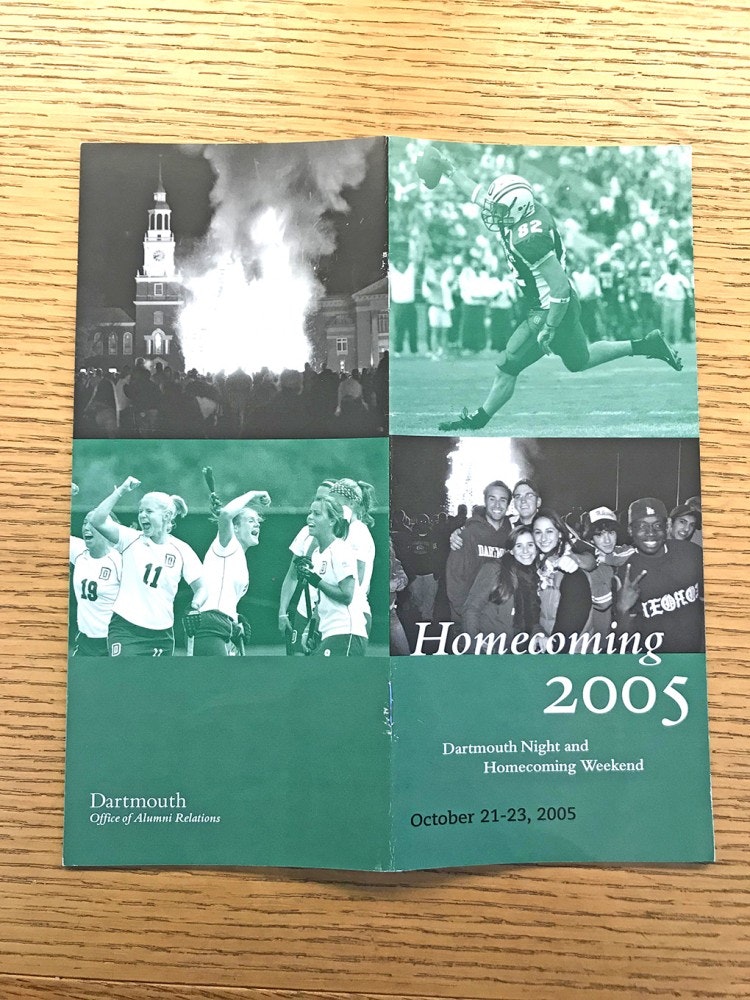When students think of Homecoming today, a certain stockpile of images appears. These images include, but are not limited to, enjoying a full social calendar of events and basement debauchery, running around the famous bonfire and, for a select few, racing up to touch the fire with the pride of their class riding high on their simultaneously cold and sweaty shoulders.
The tradition dates back to the Dartmouth presidency of William Jewett Tucker, the ninth president of the College, who first took office in 1893. Long before its modern moniker, the earliest signs of “Homecoming” resided in an exercise known as “Rhetoricals,” a weekly meeting of the entire student body. This meeting, held in the Old Chapel of Dartmouth Hall, was described by Tucker in 1919 as “a rare opportunity of indoctrinating undergraduates into the permanent duties and responsibilities of the college fellowship.”
But soon the college population grew too large for the small, smoky chamber of the Old Chapel, and in September 1895, “Rhetoricals” was replaced with a new campus event: “Dartmouth Night.” This was a night for all students, past and present, to gather together and relay the importance and history of the College. An 1896 issue of the Congressional Record and New Hampshire Journal read: “Trustees, faculty, students, and invited alumni gather in old Dartmouth Hall early in the college year to devote an evening to the traditions and glory of Dartmouth, and to stimulate pride in her achievements, and strengthen the purpose that the present and the future of the college shall be worthy of its past.”
Programming from the 1904 Dartmouth Night includes a procession escorting the Earl of Dartmouth from the Hanover Inn to the College Church, prayers, hymns, a historical address, a Dartmouth College Glee Club performance on Alumni Athletic Field and a banquet at College Hall. The on-campus gathering mainly consisted of singing, cheering and expressions of general enthusiasm at the sight of Dartmouth’s most successful alumni.
In less formal proceedings, 30 years later the 1934 “Song Sheet for Dartmouth Night” includes a song called “Eleazar Wheelock [founder of the College] Will be Turning in His Grave,” and another song’s lyrics reads: “Oh, Eleazar Wheelock was a very pious man: / [. . .] With a Gradus as Parnassum, A Bible and a drum, / and five hundred gallons of New England rum.” The chorus continues: “Fill the bowl! Fill the bowl! / And drink to Eleazar.”
Perhaps the most central component of the modern tradition is the Homecoming football game. However, this was not the case until 1923, when Memorial Field was completed and first presented to the College. A 1955 article published in The Dartmouth speaks to this connection: “Over the years the [Homecoming] program has ranged from a serious assembly in Webster Hall to a football rally outside. At present a mean between the reflective mood of Dartmouth Night and the spirit of football weekend is incorporated in the program.”
The bonfire is another staple of the Homecoming celebration. One article written in 1962, the first one to ever refer to Dartmouth Night as “Home-coming Day,” reads: “The bonfire rally will feature cheers, torches, mare fireworks, and band music by the College Band.”
Just a few years later, one woman reported that “Dartmouth’s snake danced around the fire whooping and stamping like savages. But the fire was even wilder. It demanded respect and as the searing heat waves poured forth the crowd retreated and retreated.” This is not totally dissimilar to the event today, though many members of the crowd race to touch the fire rather than retreat from it.
In fact, in 1999 the dean of the College addressed a letter to the students that said: “The Homecoming celebration has sometimes been marred by inappropriate behavior during the building of the bonfire and the so-called ‘freshman sweep,’ which resulted in injuries to students and destruction of property. … At the bonfire, students may not touch the fire or climb the structure for obvious reasons.”
Despite the many and varied interpretations of its proceedings and its unique sentiments, one sentiment regarding Homecoming still reigns true. As John Henry Bartlett, Class of 1894, once wrote: “All tell a tale of weird old days, / Which helped to mold us some, maybe, / To smooth some rough in our crude ways, / Though counting naught on our degree.”




